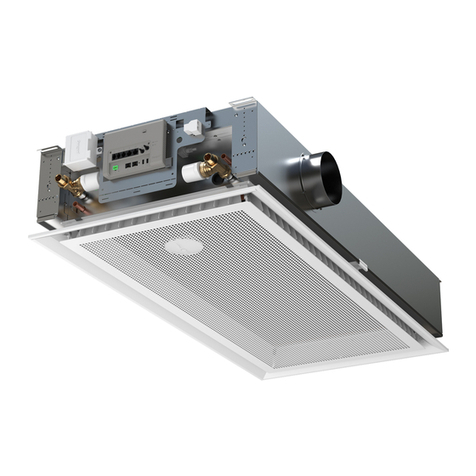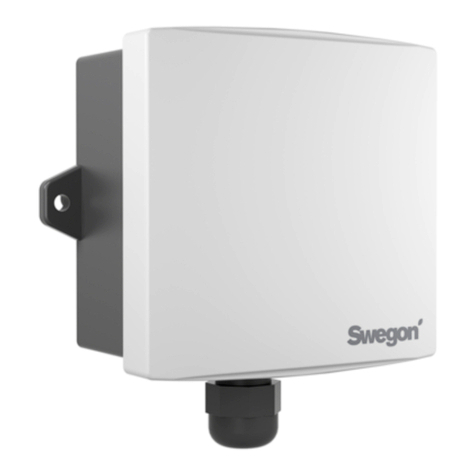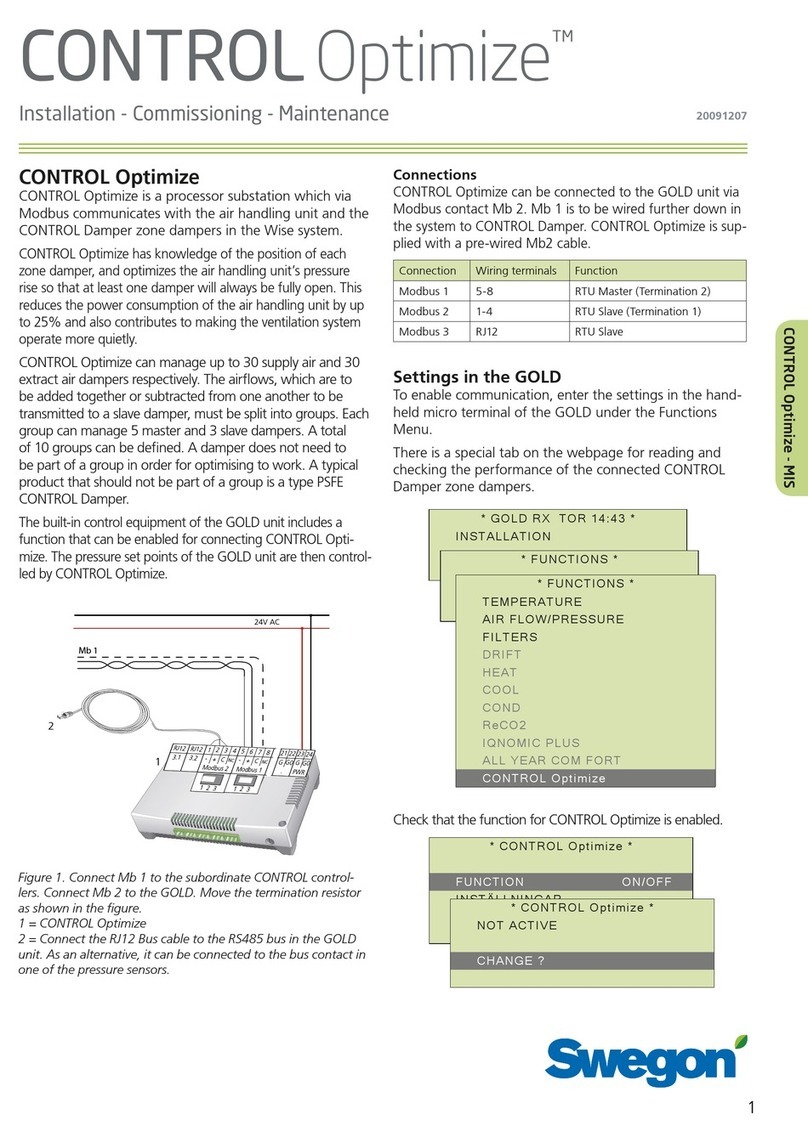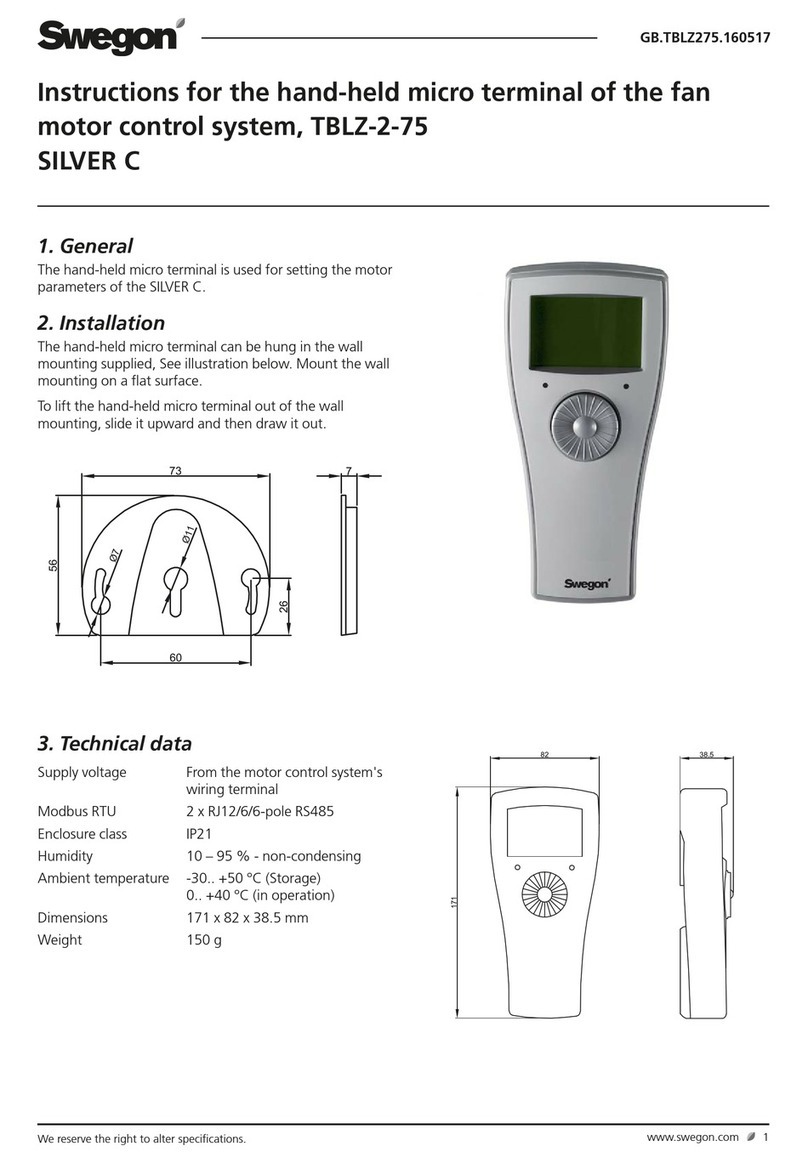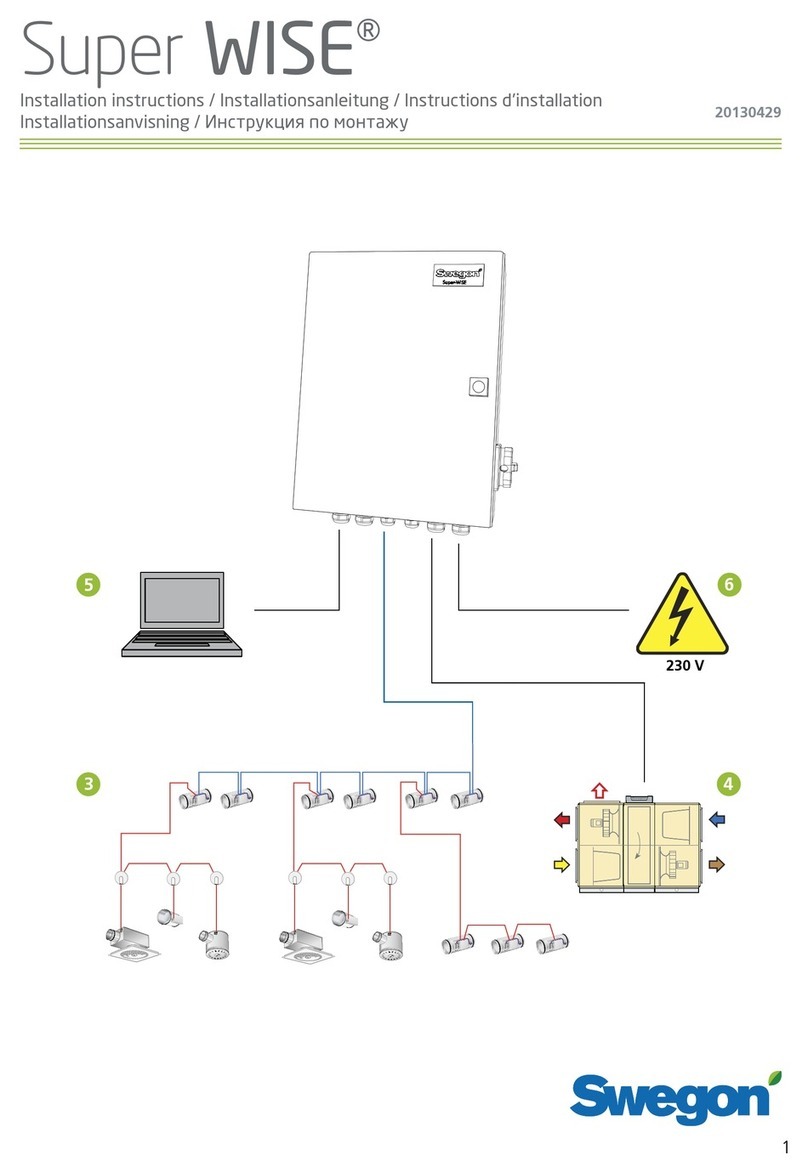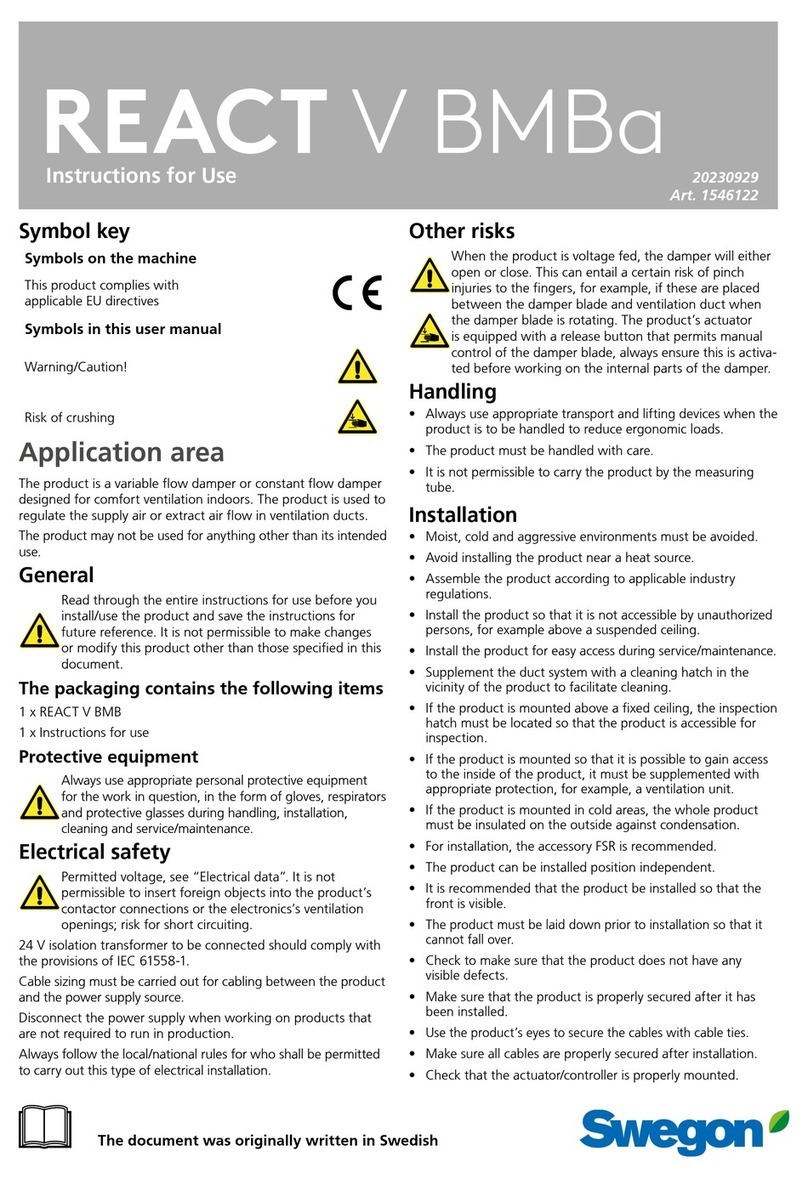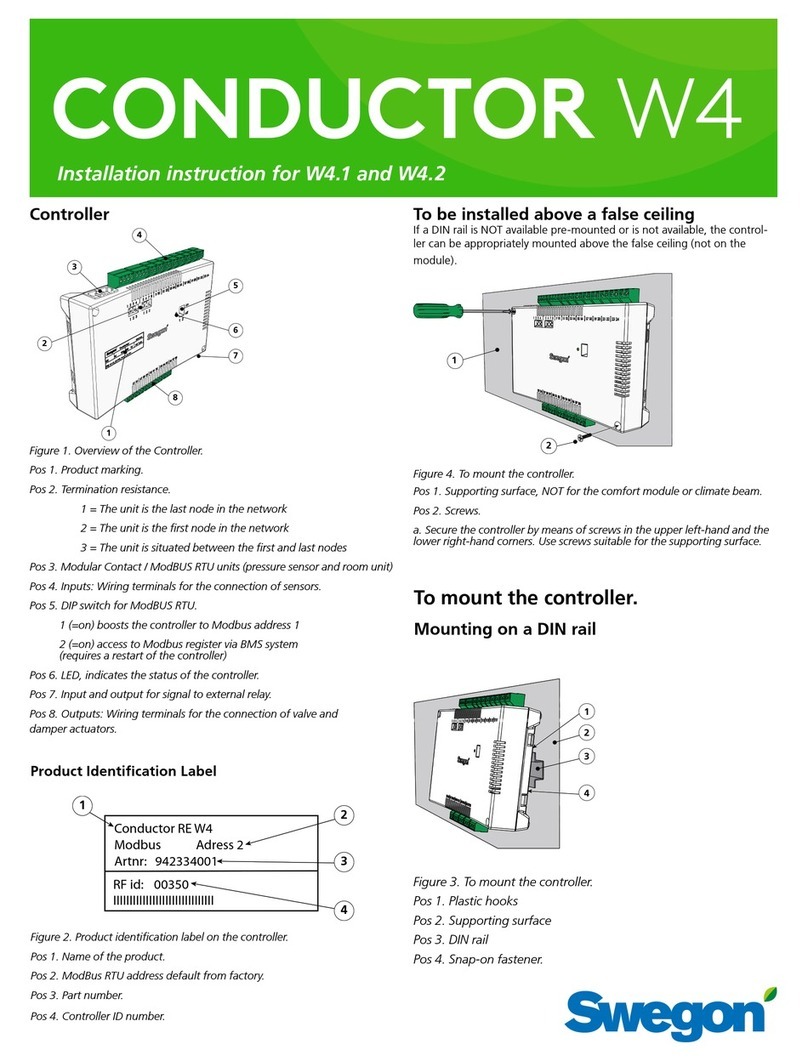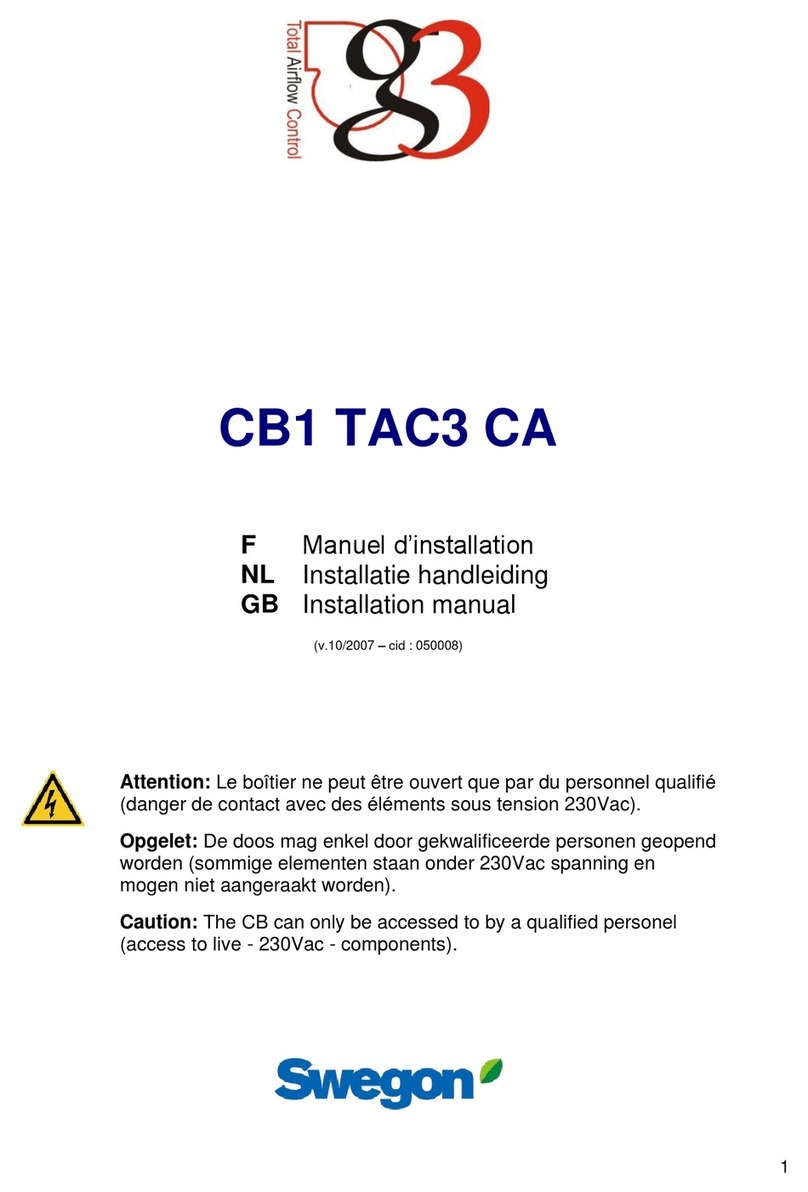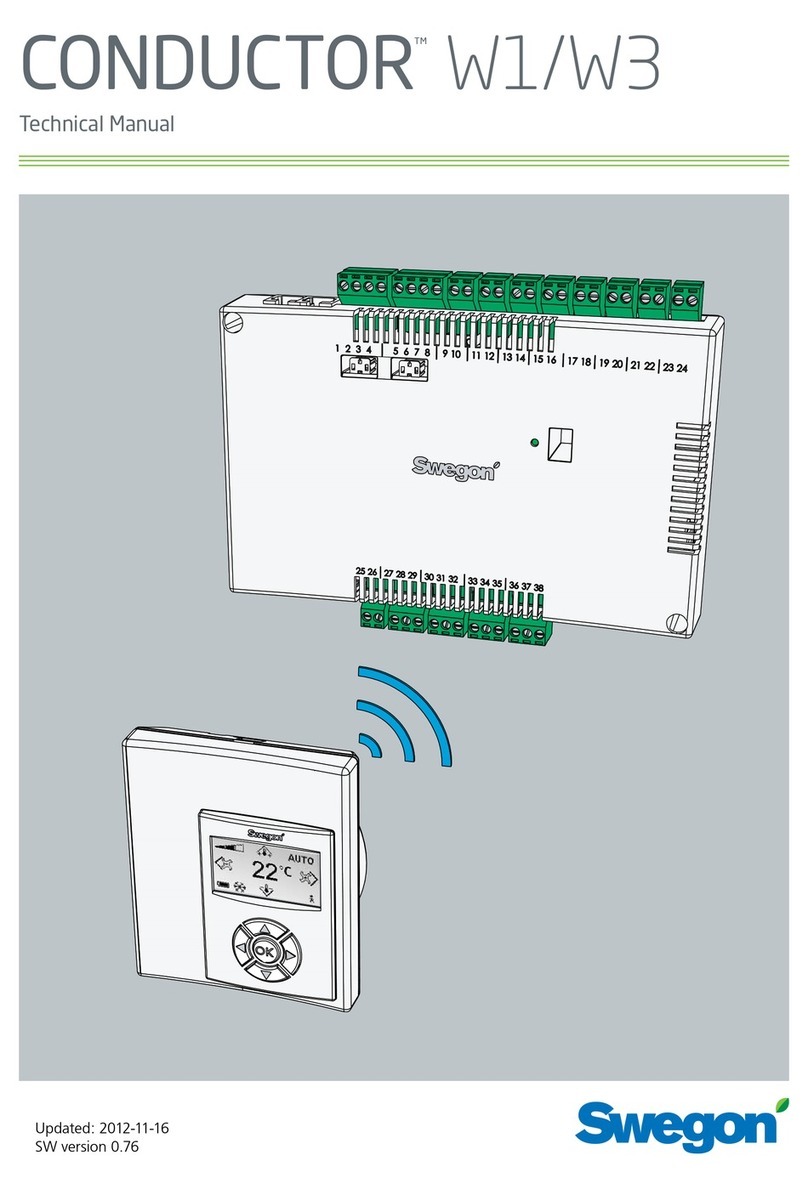
LUNA d
4Swegon reserves the right to alter specications. 13/11/2018
Control functions
The room controller regulates the temperature in the
room with the help of a heating elements and/or chilled
beams. The room controller compares the set temperature
with the current measured room temperature and controls
via its outputs the heating or cooling to the room.
3.1 Operating modes
The room controller has three operating modes each with
its setting values for room temperature and “deadband”.
Other functions can also be connected to the different
operating modes. The operating modes can be controlled
by the following functions in priority order:
1. External contact
2. Occupancy
3.2 Setting room temperatures
The room temperature is adjusted individually for the
three operating modes with the help of the hand-held
terminal LUNAd T-CU.
Using the adjuster knob on the room controller you
can only adjust the desired temperature for DAY mode.
The desired temperature is also called the “set point”.
The measured room temperature is also called the “actual
value”.
3.3 Deadband
The room controller has a neutral zone between heating
and cooling control that is called the deadband. This
function is used to prevent both the heating and cooling
outputs from being connected at the same time, and
to save energy. However, the room controller permits
the temperature to deviate a half degree up or down
compared to the set point temperature, before a control
signal is sent to the heating elements or chilled beams.
This applies in DAY operating mode.
In NIGHT mode and SAVE mode the deadband is wider, to
give an economy function when you are not in the room.
When the hand-held terminal is connected it is possible to
adjust the three different deadbands under menu 3.
For DAY operating mode: function “DB.D”
For NIGHT operating mode: function “DB.N”
For SAVE operating mode: function “DB.S”
When high climate comfort is required, the deadband
should be relatively small. However, the deadband should
be wider to save energy.
If the room controller is set to only control heating or
only cooling, then the deadband has not function, and
the room temperature is then controlled directly to the
temperature set for each operating mode.
3.4 Control process
A slightly simplified control works as follows, step by step:
3.5 P-function
The room controller’s method of control is known as “PI”,
which is an abbreviation of proportional and integral. The
proportional function (p-function) means that the controller
calculates a capacity requirement that is proportional to
the temperature deviation.
The P-band can be configured under menu 3.
P-band for heating: function “P.H”
P-band for cooling: function “P.C”
3.6 I-function
The integral function (i-function) means that the room
controller continuously monitors the capacity requirement
that the p-function gives. This helps to smooth out the
deviation more accurately than what the p-function can
sometime achieve, for example, due the heating element
or chilled beam needing a higher control signal to be able
to reach the right temperature in the room.
The I-function can be configured under menu 3.
I-time for heating: function “I.H”
I-time for cooling: function “I.C”
1. The room controller selects the right temperature and
deadband taking into consideration the enabled
operating mode.
2. The controller calculates the regulated setpoints for
cooling and heating that are equal to the setpoint ±
half the deadband.
3. If the temperature has been higher than the regulated
set point for cooling, the controller is set to cooling
mode and uses the regulated set point for cooling when
regulating.
4. The deviation between the desired temperature and
the measured temperature can be calculated.
5. The capacity value for heating or cooling is calculated.
6. The room controller’s i-function detects if the tem-
perature deviation has not been corrected for a long
period, and if necessary adds an extra “boost” to the
capacity values.
7. The capacity values are converted to output signals and
are sent to the different outputs.
